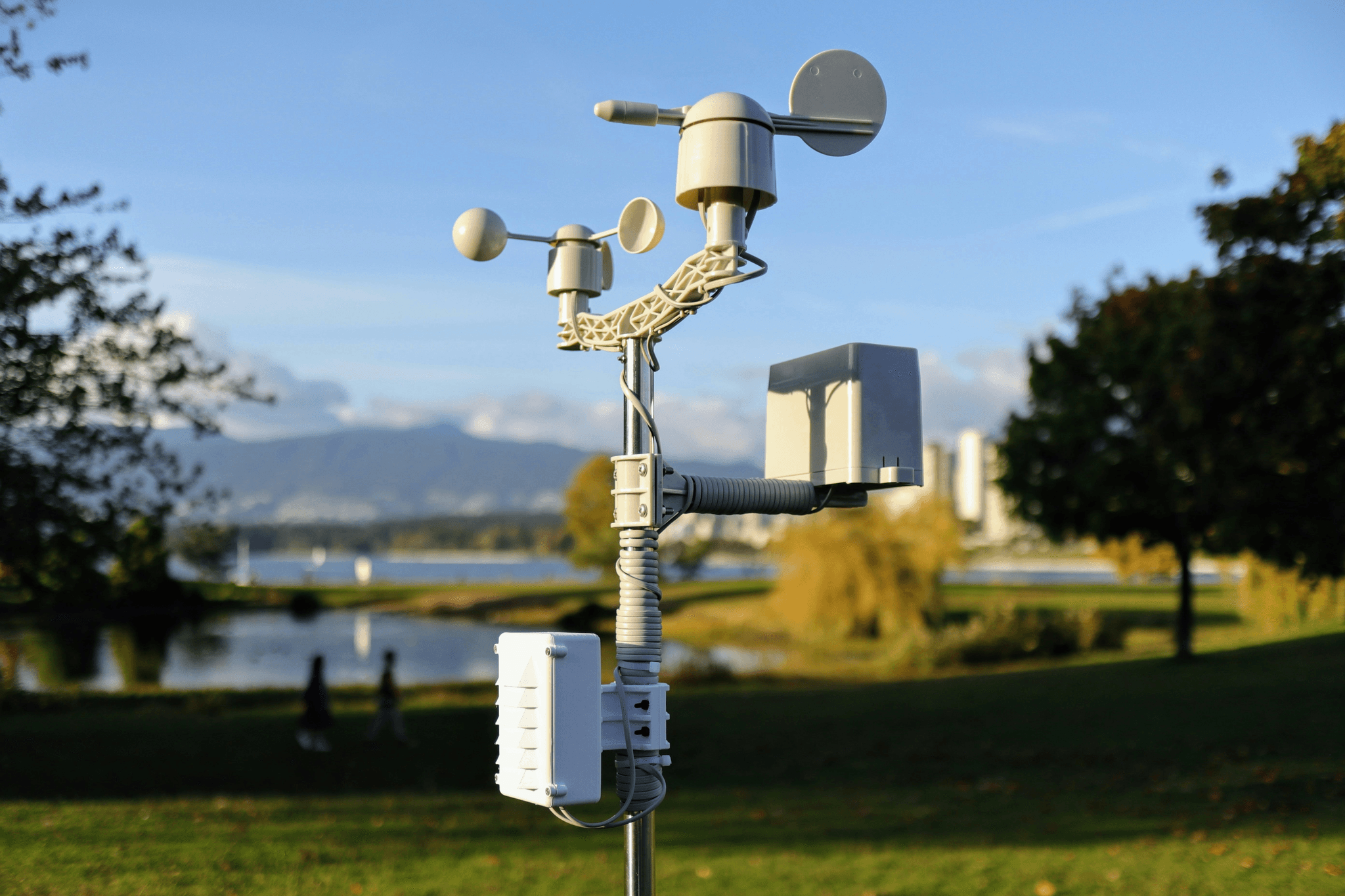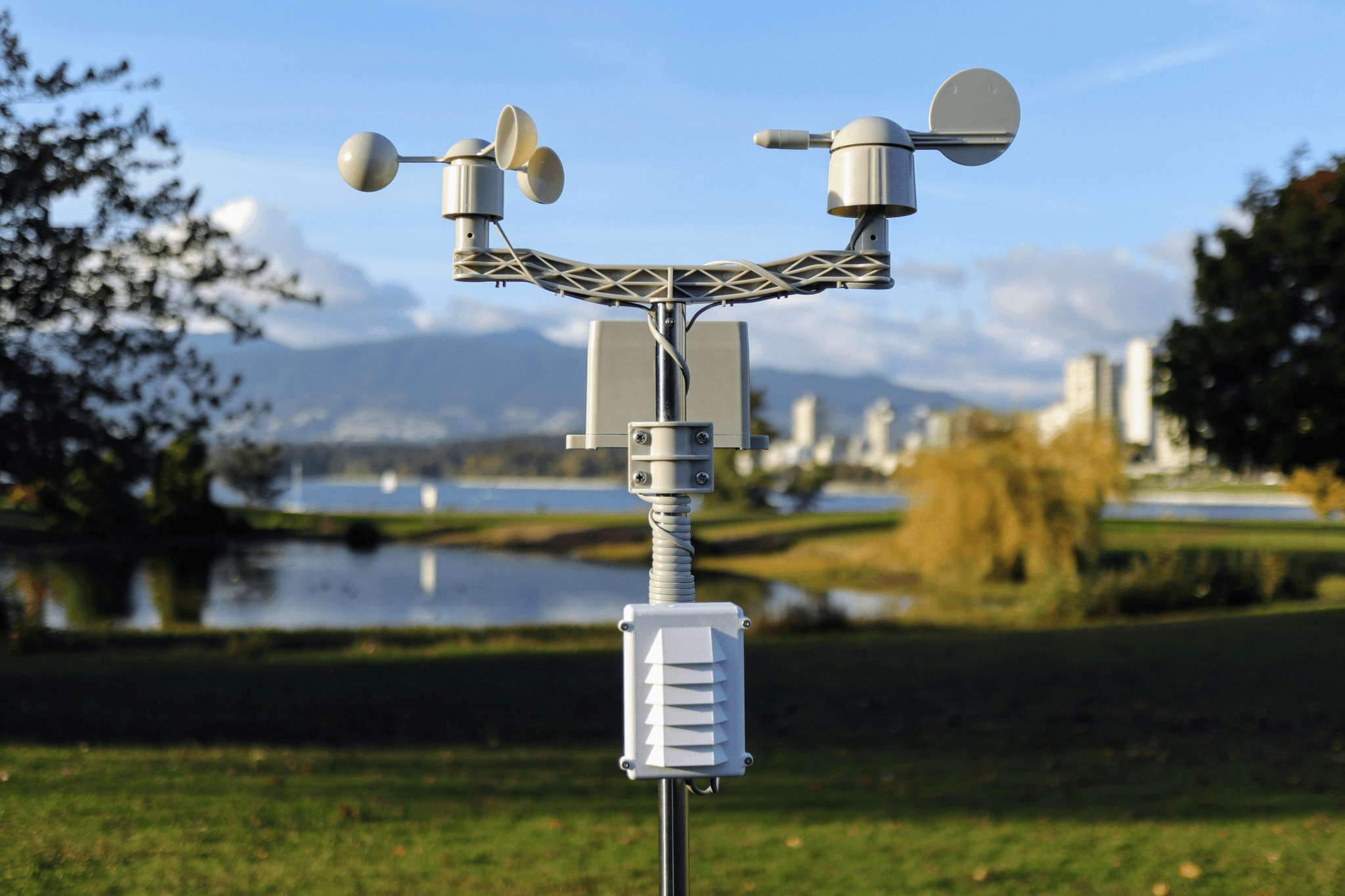Introduction

In the ever-evolving world of aviation, understanding the intricacies of Automated Weather Observation Systems (AWOS) is crucial for both safety and efficiency. These systems play a vital role in providing real-time weather data, which is essential for pilots and air traffic controllers. With the right information at their fingertips, they can make informed decisions that enhance flight safety and streamline airport operations.
Understanding Aviation AWOS Systems
So, what is AWOS in aviation? At its core, an Automated Weather Observation System is designed to continuously monitor and report on various weather parameters at airports. Equipped with advanced sensors, AWOS provides real-time updates on temperature, wind speed and direction, visibility, cloud height, and atmospheric pressure—data that is indispensable for ensuring safe takeoffs and landings.
The Role of AWOS in Flight Safety
The importance of AWOS in flight safety cannot be overstated; it serves as a critical tool for pilots navigating changing weather conditions. By delivering accurate weather reports directly to flight crews and air traffic control towers, these systems help mitigate risks associated with adverse weather. In fact, having access to reliable data from an automated airport weather station can be the difference between a smooth landing or a potentially dangerous situation.
How AWOS Enhances Airport Operations
Beyond safety considerations, AWOS significantly enhances airport operations by facilitating better decision-making processes during varied weather scenarios. The seamless integration of real-time data into existing flight systems allows for efficient scheduling and resource allocation at airports worldwide. As a result, airports can operate more smoothly even when Mother Nature decides to throw a curveball.
What is AWOS in Aviation?

Automated Weather Observation System (AWOS) plays a pivotal role in modern aviation, providing essential meteorological data that enhances flight safety and operational efficiency. Understanding what AWOS is in aviation helps clarify its significance within the broader context of air travel. By integrating advanced technology, AWOS ensures that pilots and air traffic controllers have access to real-time weather information crucial for informed decision-making.
Overview of Automated Weather Observation System
At its core, an Automated Weather Observation System (AWOS) is designed to continuously monitor and report weather conditions at airports. This system collects data on various atmospheric parameters such as temperature, wind speed and direction, visibility, cloud cover, and atmospheric pressure. The information gathered by AWOS is vital for pilots preparing for takeoff or landing, as it allows them to assess current weather conditions before making critical flight decisions.
Key Components of AWOS Technology
The technology behind aviation AWOS consists of several key components that work together seamlessly to deliver accurate weather data. These components include various sensors—such as anemometers for wind speed measurement, barometers for atmospheric pressure readings, and visibility sensors—that collect real-time information about the environment. Additionally, the automated airport weather station processes this data through sophisticated software systems that ensure timely dissemination to pilots and air traffic control.
Applications in Modern Aviation
In modern aviation, the applications of AWOS are numerous and critical for safe flight operations. For instance, during inclement weather conditions like fog or heavy rain, having access to precise measurements from an Automated Weather Observation System can significantly impact flight planning and execution. Furthermore, understanding what is the difference between ASWS (Automated Surface Weather Stations) and AWOS highlights how each system serves unique roles in providing comprehensive weather insights tailored to different operational needs in aviation.
The Mechanics of AWOS Functionality

Understanding the mechanics behind Aviation AWOS is essential for grasping its significance in modern air travel. Automated Weather Observation Systems (AWOS) are equipped with advanced technology that allows for precise weather monitoring, providing critical data to pilots and air traffic controllers alike. This section will delve into the sensors and data collection methods utilized by AWOS, the process of real-time data transmission, and how these systems seamlessly integrate with flight operations.
Sensors and Data Collection Methods
At the heart of what is AWOS in aviation are the sensors that collect vital weather information. These automated airport weather stations deploy an array of instruments designed to measure various atmospheric parameters such as temperature, wind speed, humidity, visibility, cloud height, and atmospheric pressure. Haisen's Aviation Automatic Weather Observation Station exemplifies this technology by continuously gathering real-time data through its sophisticated sensor suite—ensuring that pilots have access to accurate information crucial for safe flight operations.
The efficiency of these sensors not only enhances safety but also aids in operational planning at airports. By providing constant updates on changing weather conditions, aviation AWOS systems help mitigate risks associated with adverse weather events. This capability is particularly important when considering factors like turbulence or low visibility during takeoff and landing phases.
Real-Time Data Transmission
Once collected, the next step in AWOS functionality involves real-time data transmission to relevant stakeholders within the aviation ecosystem. The data gathered by automated airport weather stations is transmitted via high-speed communication networks to ensure that both pilots and air traffic controllers receive timely updates about current conditions at their departure or arrival airports. This aspect addresses one of the key differences between ATIS (Automatic Terminal Information Service) and AWOS; while ATIS provides pre-recorded messages about airport conditions, AWOS delivers live updates that can change minute by minute.
This continuous flow of information significantly enhances situational awareness for all involved parties during flight operations. With real-time updates from an Automated Weather Observation System like Haisen's station, decision-makers can quickly adapt their strategies based on evolving weather patterns—ultimately contributing to safer skies for everyone involved in aviation.
How AWOS Integrates with Flight Systems
The integration of Aviation AWOS with existing flight systems represents a leap forward in ensuring safe aviation practices. By connecting directly with cockpit instruments and air traffic control systems, AWOS provides critical data that informs decision-making processes during flights—from takeoff through landing. Understanding what is the difference between ASWS (Automated Surface Weather Stations) and AWOS becomes essential here; while both provide valuable weather insights, only AWS delivers comprehensive atmospheric details specifically tailored for aviation use.
Moreover, as more airports adopt advanced technologies like Haisen's Aviation Automatic Weather Observation Station, we can expect increased interoperability among different systems within the aviation framework. This seamless integration not only streamlines communication but also enhances overall operational efficiency at airports worldwide—making it clear why many experts ponder whether is AWOS or ASOS better suited for modern needs.
In conclusion, understanding how these components work together sheds light on just how vital Aviation AWOS has become in enhancing flight safety and operational effectiveness across global airspace.
AWOS vs. ASOS: What’s the Difference?

When discussing weather observation systems in aviation, two acronyms often come up: AWOS and ASOS. Both serve crucial roles in providing real-time weather data to pilots and air traffic controllers, but they have distinct differences that can impact their effectiveness in various situations. Understanding these differences is essential for making informed decisions about which system best meets the needs of specific airports or operations.
Comparing Automated Weather Observation Systems
Automated Weather Observation Systems (AWOS) and Automated Surface Observing Systems (ASOS) are designed to collect and disseminate weather information, but they do so with varying capabilities and applications. AWOS typically focuses on providing localized weather data that can be tailored to specific airport requirements, while ASOS is a more standardized system used across many airports for broader meteorological observations. The key difference lies in their customization; aviation AWOS can be fitted with additional sensors or features depending on an airport's unique needs, whereas ASOS offers a one-size-fits-all approach.
In terms of functionality, both systems gather essential meteorological parameters such as temperature, wind speed, visibility, and pressure; however, AWOS often includes more advanced options like runway condition reporting and automated alerts for hazardous conditions. This flexibility makes AWOS particularly valuable at smaller or regional airports where specific local conditions may influence flight safety significantly. Thus, when asking What is the difference between AWSS and AWOS?, it’s clear that customization plays a pivotal role.
Unique Features of Haisen's Aviation Automatic Weather Observation Station
Haisen's Aviation Automatic Weather Observation Station exemplifies the advanced capabilities that modern aviation AWOS can offer. Designed to provide continuous, real-time weather information at airports, it employs various sensors to measure critical parameters like temperature, wind speed and direction, visibility, cloud height, and atmospheric pressure. This comprehensive data collection ensures that pilots receive timely updates necessary for safe navigation during takeoff and landing.
One standout feature of Haisen's system is its ability to integrate seamlessly with existing airport operations technology—this means that data from Haisen's station can feed directly into air traffic control systems or pilot displays without delay. Additionally, its user-friendly interface allows personnel on-site to monitor conditions easily or adjust settings as needed based on changing environmental factors. When comparing What is the difference between ATIS and AWOS?, Haisen's system demonstrates how specialized features enhance operational efficiency beyond basic reporting.
Use Cases and Preferences in Aviation
In aviation settings where precise weather data is paramount—such as during adverse weather conditions—AWOS tends to be favored over ASOS due to its customizable nature and enhanced reporting capabilities. Airports often prefer aviation AWOS when they require specific metrics not typically provided by standard ASOS installations; this could include detailed runway condition assessments crucial for maintaining safety standards during winter operations or heavy rainfall scenarios.
Moreover, operators looking to invest in an automated airport weather station may lean towards solutions like Haisen's Aviation Automatic Weather Observation Station because it delivers tailored insights unique to their operational context while remaining compatible with existing technologies used by pilots and air traffic controllers alike. Ultimately, whether one opts for an AWOS or ASOS will depend on individual airport needs; however, those seeking flexibility often find themselves drawn toward the advantages offered by advanced systems like Haisen’s.
AWOS vs. ATIS: Understanding the Distinction

Definitions and Functions Explained
Automated Weather Observation System (AWOS) is a sophisticated network of sensors designed to provide continuous, real-time weather data at airports. It measures various atmospheric parameters such as temperature, wind speed and direction, visibility, cloud height, and atmospheric pressure—essentially painting a vivid picture of current weather conditions for pilots and air traffic controllers alike. On the other hand, Automatic Terminal Information Service (ATIS) broadcasts pre-recorded information that includes not only weather updates but also crucial details about runway conditions and any other pertinent notices regarding airport operations.
The primary function of AWOS is to deliver real-time data directly from an automated airport weather station to users on the ground or in the cockpit. In contrast, ATIS provides a synthesized summary of this information along with other operational details that are updated regularly but not continuously like AWOS. Essentially, while both systems aim to enhance flight safety by improving situational awareness in aviation awos environments, they do so through different mechanisms.
Operational Scenarios for Each System
In practical terms, AWOS is particularly useful during takeoff and landing phases when immediate weather changes can significantly impact flight safety. For instance, if a sudden gust of wind occurs or visibility drops unexpectedly due to fog or rain, AWOS will provide instant updates that allow pilots to make informed decisions on-the-fly—quite literally! Meanwhile, ATIS serves its purpose when pilots are preparing for departure or arrival; they listen to the recorded message before entering controlled airspace or taxiing on the runway.
In busy airport environments where quick decision-making is crucial, having both systems working together creates a comprehensive safety net for aviation professionals. Pilots might receive immediate alerts from AWOS while also being informed about overall operational conditions through ATIS messages before landing or taking off. This synergy enhances situational awareness significantly during critical phases of flight.
The Importance of Clear Communication
One cannot underestimate the value of clear communication between these two systems in maintaining high standards of flight safety within aviation awos frameworks. Pilots rely heavily on accurate data relayed by both AWOS and ATIS; any confusion could lead to potentially dangerous situations if important details get lost in translation—or worse yet—misunderstood altogether!
Moreover, as technology advances with innovations like Haisen's Aviation Automatic Weather Observation Station—which offers seamless integration with existing systems—the clarity and reliability of communicated data will only improve further over time. The collaboration between automated systems ensures that pilots have access to timely updates without needing extensive manual input from ground staff—a win-win scenario!
In conclusion, understanding what is the difference between ATIS and AWOS helps aviation professionals navigate their respective roles more effectively while prioritizing safety above all else.
Evaluating AWOS and ASOS: Which Is Better?

When it comes to automated weather observation systems in aviation, two prominent players are AWOS (Automated Weather Observation System) and ASOS (Automated Surface Observing System). Both systems have their strengths and weaknesses, making the choice between them a matter of specific needs and operational contexts. Understanding the pros and cons of each system can help pilots, air traffic controllers, and airport operators make informed decisions that prioritize safety and efficiency.
Pros and Cons of Each System
AWOS is designed to provide continuous, real-time weather data crucial for aviation operations. One of its primary advantages is its ability to offer localized weather information tailored to specific airports. However, this system may sometimes lack the comprehensive reporting capabilities found in ASOS, which is known for its extensive data collection across various meteorological parameters.
On the flip side, ASOS provides a broader range of atmospheric data compared to AWOS, making it a robust option for larger airports or those with more complex operational needs. Its integration with national weather services allows for enhanced forecasting capabilities. The downside? ASOS can be more expensive to install and maintain than an automated airport weather station like AWOS.
Ultimately, deciding whether AWOS or ASOS is better depends on specific requirements such as budget constraints, airport size, and the level of detail needed in weather reporting. For smaller airports focusing on immediate flight safety needs, AWOS may be sufficient; however, larger airports might benefit from the comprehensive nature of ASOS.
Performance in Various Weather Conditions
Both AWOS and ASOS are equipped to handle diverse weather conditions effectively; however, their performance can vary depending on certain factors. In clear skies with minimal turbulence or adverse conditions, both systems deliver reliable data that pilots depend on for flight planning. Yet when faced with extreme weather events—such as heavy precipitation or fog—the robustness of each system's sensors comes into play.
AWOS typically excels in providing localized updates during rapidly changing conditions due to its dedicated focus on individual airports. This means that if you're flying into an airport equipped with an advanced Haisen's Aviation Automatic Weather Observation Station during stormy conditions, you’ll receive precise updates about wind speeds or visibility changes right when you need them most.
Conversely, while ASOS also performs admirably under various circumstances thanks to its extensive sensor network across regions, there could be slight delays in localized updates due to its broader scope of operation. Therefore, if you're wondering what is the difference between AWSS (Automated Weather Sensor System) and AWOS regarding performance during severe weather events—AWSS focuses more on non-aviation applications while AWOS remains firmly centered around aviation-specific needs.
Expert Opinions on System Effectiveness
Experts generally agree that both systems have their merits but often recommend choosing based on context rather than declaring one outright superior over the other. Aviation professionals emphasize that while many smaller regional airports find success using an Automated Weather Observation System like Haisen’s Aviation Automatic Weather Observation Station due to its cost-effectiveness and efficiency in delivering critical real-time information—larger facilities might lean towards ASOS for its comprehensive coverage.
When evaluating effectiveness through expert lenses regarding what is Awos in aviation versus what is the difference between ATIS (Automatic Terminal Information Service) and AWOS—it's clear each system serves unique purposes tailored toward different aspects of flight operations management. Pilots appreciate how quickly they can access vital data from either system; however, they often highlight how crucial clear communication remains regardless of which technology is employed.
In conclusion—while both systems have distinct features catering to varying needs within aviation operations—the choice often boils down to individual circumstances at each airport site rather than a definitive better option overall.
Conclusion

As we wrap up our exploration of Aviation AWOS systems, it’s clear that these automated marvels play a crucial role in enhancing flight safety and operational efficiency. The Automated Weather Observation System (AWOS) provides real-time weather data that is indispensable for pilots and air traffic controllers alike. By ensuring accurate weather observations, AWOS significantly reduces the risk of weather-related incidents, making it a staple in modern aviation.
The Crucial Impact of AWOS on Safety
The impact of AWOS on aviation safety cannot be overstated. By providing continuous updates on vital weather parameters, such as wind speed and visibility, AWOS systems empower pilots to make informed decisions during critical phases of flight. This timely information is essential for avoiding hazardous conditions and ensuring safe landings and takeoffs, ultimately saving lives and resources in the aviation industry.
Future Developments in AWOS Technology
Looking ahead, the future of Automated Weather Observation Systems promises exciting advancements. Innovations such as improved sensor technology and enhanced data analytics will likely lead to even more precise weather forecasting capabilities. Furthermore, integrating artificial intelligence into these systems could revolutionize how we interpret meteorological data, ensuring that aviation AWOS continues to meet the ever-evolving needs of air travel.
Choosing the Right Weather Observation System
When it comes to selecting the right weather observation system for an airport, understanding the differences between various options is paramount. For instance, many wonder what is the difference between AWSS (Automated Weather Sensor System) and AWOS; while both serve similar purposes, they have distinct functionalities tailored to different operational needs. Similarly, knowing what is the difference between ATIS (Automatic Terminal Information Service) and AWOS can help decision-makers choose a system that best fits their requirements—whether prioritizing real-time data collection or streamlined communication with pilots.
